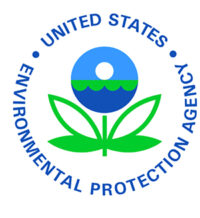Updated map loads more quickly, includes additional information to help protect people from wildfire smoke
WASHINGTON – Sept. 5, the U.S. Environmental Protection Agency and the U.S. Department of Agriculture’s Forest Service released an updated version of the popular AirNow Fire and Smoke Map to provide millions of people in the U.S. with more information they can use to protect themselves from wildfire smoke.
“As millions of Americans have experienced, wildfire smoke can travel for hundreds of miles, including from Canada, affecting people anywhere in the U.S.,” said EPA Assistant Administrator for Air and Radiation Joseph Goffman. “The updated AirNow Fire and Smoke Map makes even more information available about wildfire smoke and air quality – information anyone across the country can use to reduce their exposure and protect their health.”
“As we continue the important work to confront the wildfire crisis, we are committed to working with federal, state, tribal and local health departments and air quality agencies to protect public health,” said Forest Service Chief Randy Moore. “This updated map is a valuable resource for people taking action to protect themselves and their families from smoke impacts.”
The updated Fire and Smoke Map has a new look and feel, is designed to load more quickly, and includes information not available in the previous versions, such as:
- Air quality monitoring information on coarse particle pollution and ozone, both of which can increase because of wildfire smoke.
- More information on individual wildland fires, including the type of fire and level of fire activity, when available.
- Information from low-cost fine particle sensors in Canada, in cooperation with Environment and Climate Change Canada.
The new version of the map allows users to see activity recommendations at a glance – or to expand the information to see more, including more information on actions to take to protect your health, charts showing how air quality has changed over the past week, and whether there are other fires within 30 miles of their locations. The map makes Smoke Outlook alerts more prominent and links to these forecasts, where available, to help the public better understand the possible impacts of smoke over the next several days. The Forest Service-led Interagency Wildland Fire Air Quality Response Program issues Smoke Outlooks for certain large fires.
EPA and the Forest Service made a beta version of the map available for public review in July; the new version reflects changes the agencies have made to date in response to public feedback.
EPA and the Forest Service developed the Fire and Smoke Map to provide the public information on fire locations, smoke plumes, near real-time air quality, Smoke Outlooks for large U.S. wildfires, and protective actions to take — all in one place. To give users the most localized air quality information possible, the map pulls data from monitors that regularly report to AirNow, temporary monitors such as those the Forest Service and air agencies have deployed near fires, and crowd-sourced data from nearly 15,000 low-cost sensors that measure fine particle pollution, the major harmful pollutant in smoke. The map shows this data in the familiar color-coding of the U.S. Air Quality Index.
You can view the Fire and Smoke Map on the AirNow website or select the smoke icon on the bottom right of the AirNow smartphone app. To view the map in Spanish or to select a modified AQI color scale for users with certain color vision deficiencies, click the settings icon at the top right corner of the map.
Download the AirNow app:
- Apple App Store: https://apps.apple.com/us/app/epa-airnow/id467653238
- Google Play Store: https://play.google.com/store/apps/details?id=com.saic.airnow





